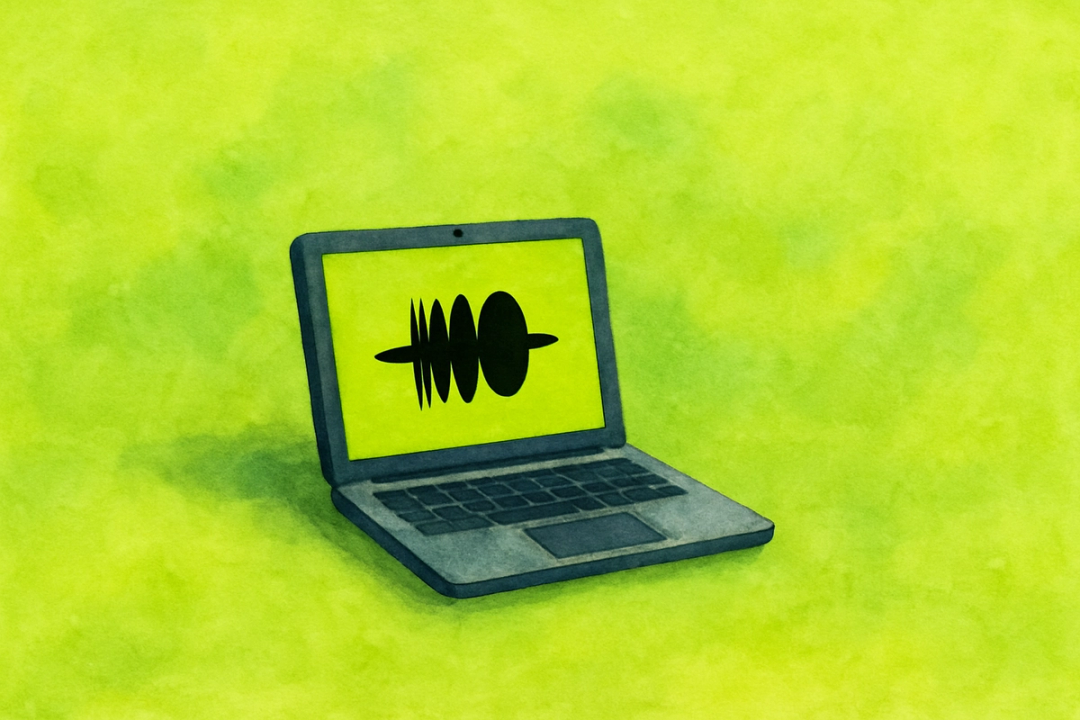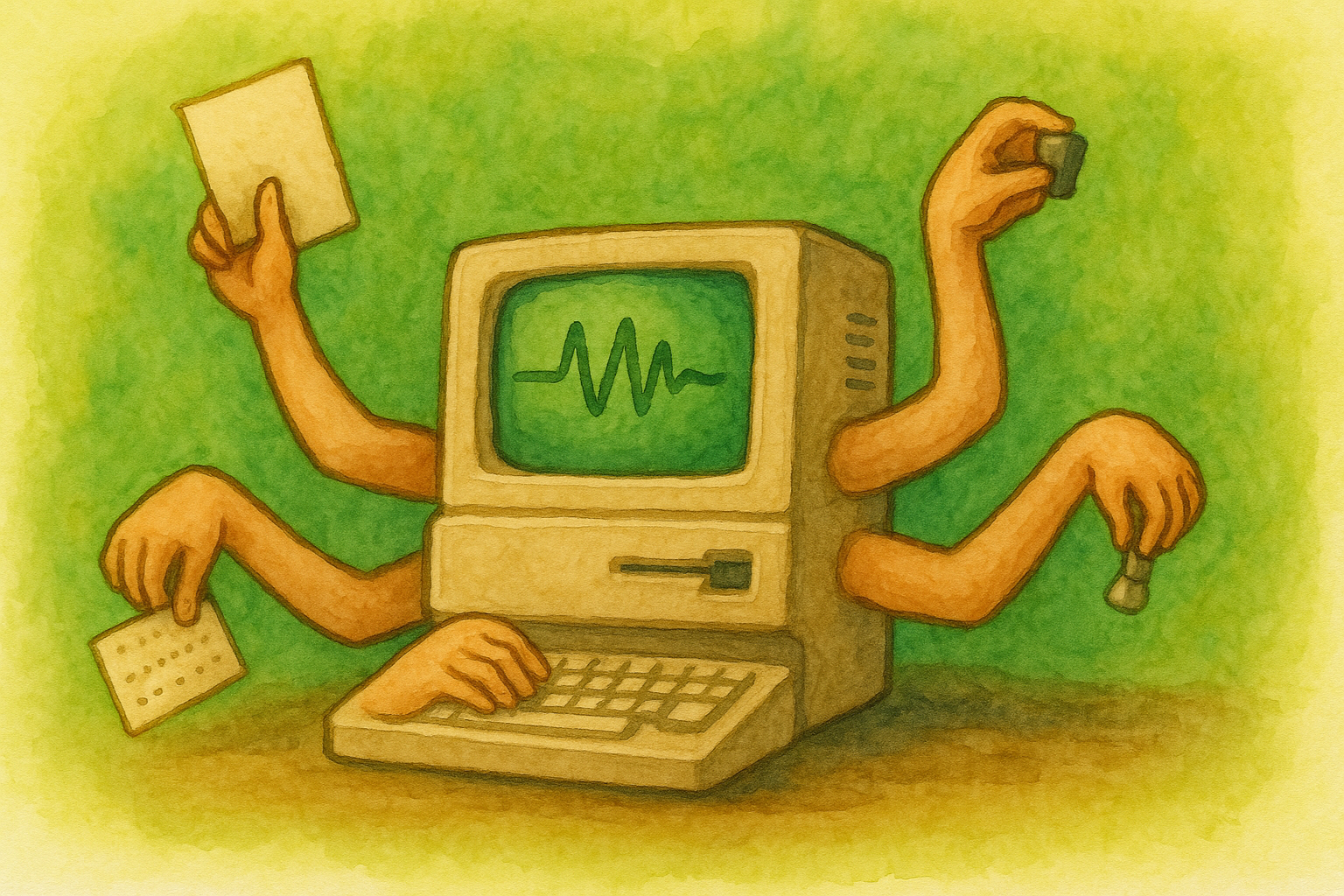Why Otim Calls Itself an Operating System (And Why That Matters)
The future of blockchain finance isn't just about better tools. It's about better systems. Otim is that system: the first true operating system for on-chain finance.
Adam Carlson
Julian Rachman

The first electronic general-purpose digital computer, ENIAC, was built in 1945, but it could only do one thing at a time. Despite weighing 30 tons and filling an entire room, this revolutionary machine was severely limited and required manual reconfiguration for each new task.
The breakthrough came with operating systems that could coordinate multiple programs and create seamless user experiences. Operating systems didn't just run programs. They became the command center that managed everything. At Otim, we've applied this same revolutionary approach to blockchain accounts.
Blockchain accounts face the same fundamental limitation that plagued ENIAC. Externally Owned Accounts (EOAs), which represent over 90% of Ethereum accounts, can only handle one transaction at a time and require constant manual intervention.
With EIP-7702's introduction of smart contract functionality to EOAs, we're at the same inflection point that computing faced in the 1940s. We've built the solution: blockchain's first financial operating system that transforms your basic account into a comprehensive command center.
In the 1940s and 50s, computers ran one program at a time. Programmers would write their code on punch cards, head to room-sized computers, and hand their program to operators who would feed the code into the machine as soon as it was available. The process was not only inefficient, but was a bottleneck that prevented computers from reaching their true potential.
The first operating systems emerged to solve this exact problem. Operating systems are specialized programs with unique privileges that serve as intermediaries between users and their applications. With their introduction, the manual, one-at-a-time process could finally be automated. Computers could now process batches of programs sequentially, automatically moving from one task to the next without human intervention.

This advancement came at a crucial time. Computers were becoming cheaper and more widespread, appearing in universities and libraries worldwide. The inefficiency of the old system had become a critical barrier to progress, and operating systems removed that barrier entirely. Most importantly, they created a unified control interface where users could manage all their computing needs from one location.
The EOA Efficiency Problem
Today's blockchain users face a remarkably similar challenge. EOAs, like early computers, can only handle one task at a time and require constant manual oversight. Want to set up recurring payments? You'll need to manually execute each transaction. Need to automatically rebalance your portfolio based on market conditions? Impossible without constant monitoring and intervention.
This manual approach creates the same type of inefficiency that plagued early computing. As blockchain adoption grows and financial operations become more sophisticated, these limitations become increasingly problematic. What's missing is an intermediary system, a command center that can orchestrate multiple financial operations seamlessly.
So how does Otim solve this core problem?
Beyond Protocols: Building a True Operating System
Just as early operating systems automated program management, Otim automates financial operations. But here's the crucial distinction: we're not building just another protocol. We're building a comprehensive operating system that serves as the intermediary between you and all your financial tools. The system enables your account to execute complex, multi-step financial strategies without constant supervision: recurring transactions, conditional trades, automated rebalancing, and sophisticated DeFi interactions can all run seamlessly in the background.
Otim goes beyond simple automation by creating a unified control interface for the entire DeFi ecosystem. Early operating systems also solved the "peripheral problem," the nightmare of making software compatible with every type of hardware device (printers, audio systems, storage devices, etc.). They did this by creating drivers: standardized translation layers that allowed different hardware components to communicate with the central system.
Otim employs the same principle for DeFi. Instead of forcing users to navigate dozens of different protocols, each with its own interface and requirements, Otim standardizes access to the entire DeFi ecosystem. Swaps, lending, staking, transfers, yield farming. All of these previously fragmented tools are unified under one streamlined, harmonious machine. Like a computer's OS, Otim serves as the intermediary between you and all the financial programs you want to run.
This is why we call Otim an operating system rather than simply a protocol. Like a computer's OS, Otim serves as the intermediary between you and all the financial programs you want to run. It provides a unified control interface, a command center where you can orchestrate your entire financial strategy from one location.
Through Otim's interface, you gain access to a comprehensive financial toolkit that operates with the efficiency and reliability of a modern computer system. Your on-chain financial life becomes as streamlined and automated as any other digital process you rely on daily. Instead of juggling multiple protocols and interfaces, you have one command center that coordinates everything.
The future of blockchain finance isn't just about better tools. It's about better systems. Otim is that system: the first true operating system for on-chain finance. Not just a protocol, but a complete command center that serves as your intermediary to the entire DeFi ecosystem.